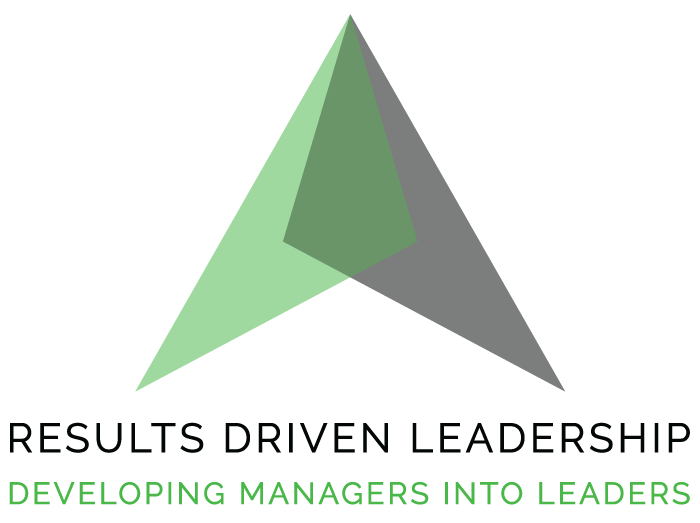TABLE OF CONTENTS
You know what keeps executives up at night? Those superstar managers who’s brilliant as hell but toxic as poison to their team and peers. The rainmaker who’s also a soul-crusher. The person with the invaluable skills and knowledge, but the personality who’s making everyone miserable and avoidant. We often refer to them as our “Difficult People”
Hey, you! Business owners, CEOs, and corporate executives, this is coming at you begging for your attention.
Ever had that feeling of watching a human wrecking ball demolish your carefully built team culture? You’re not alone, my friends. Often, they are so valuable from a knowledge standpoint and so difficult to talk to or correct, you just avoid them. You’ve known you need to do something, but the thought of having to correct them or tell them to change is staggering, and you just don’t. Well, you’re not alone.
Many in your position want to change their dynamic, but you simply don’t have the tools or knowledge to do so. So, you just have to let it happen. Often, their bad behavior or negative impact just becomes normalized. “Well, you know how they are” is often the excuse you have to give to their peers or direct reports. That’s what today’s show is about. Don’t sit on the sidelines letting this behavior and impact take its course. We are going to talk about the single best way to address it and correct it.
You need to bring in an executive coach—one who is trained and experienced and has the tools and knowledge to guide troublemakers to self-realize and commit to change and improvement. It can happen, and it does happen very often. I do it for a living and know that the change is in them; someone just must know how to bring it out.
Look at the Data
Let’s put the objective data into play. According to the International Coaching Federation, a whopping 87% of organizations believe executive coaching delivers massive ROI. But here’s the mind-blowing part—two-thirds of top leaders NEVER receive outside guidance!
Let me hit you with some data that’ll make your CFO’s calculator smoke. Companies that invest in comprehensive leadership development see a staggering 250% higher return than those who don’t! And get this – Deloitte found that organizations with strong learning cultures are 92% more likely to innovate and 52% more productive. Your competition is already figuring this out!
Coaching the Uncoachable
Today, we’re diving headfirst into the deep end – coaching those who seem absolutely, positively UNCOACHABLE. And stick around because I’m unveiling something that could revolutionize your management team – my brand-new “90-Day Manager to Leader” jumpstart program that’s going to transform your company’s DNA.
Let’s get this party started!
First things first – what makes people so damn difficult to coach? Why can elite NFL athletes – literal millionaires at the top of their game – embrace coaching while your VP of Sales acts like he’s God’s gift to business?
Let me drop some truth bombs. The Kansas City Chiefs have 53 players and – get this – 29 coaches! That’s almost a 2:1 player-to-coach ratio. Why? Because champions love to win and CRAVE coaching. They hunger for that edge.
But in the corporate trenches, coaching often gets twisted. It morphs into what looks like punishment or another layer of management BS. Nobody wants that! Without clear parameters, coaching feels like just another way of saying, “Do what I tell you, but I’m calling it ‘development’ now.”

The Brutal Reality
Here’s the brutal reality – most of your managers never ASKED to be managers. They’re what we call “accidental managers” – technical superstars who got promoted because they were great individual contributors, not because they had any clue how to lead humans!
A mind-blowing 60% of new managers receive ZERO training when they step into leadership roles. Zero! Is it any wonder 40% of them crash and burn in their first 18 months? But here’s the rub: they don’t know they’ve crashed and burned. Why?
Because of the tendency to externalize their challenges. For most, they blame it on the team, or it’s “hard to find good people,” or “this generation is so difficult to manage.” Deflecting the real driver of poor performance, which is weak leadership. And their boss accepts that because it makes sense, but only on the surface. There is usually a root cause, and the cause is them. Get Real.
Let me tell you something that’ll change your perspective forever: KNOWING IS THE ENEMY OF LEARNING. Those words from Tom Chi, former lead engineer at Google X, strike at the heart of the uncoachable. When your hotshot managers are busy being experts on what they already know, they’re shutting down the possibility of growth. Their expertise becomes their prison.
Want to change the trajectory and turn these pains in the ass into awesome role models? Let’s break down five game-changing strategies that’ll help you coach even the most stubborn, brilliant jerks in your organization.
First you have to find a coach you feel can be the catalyst to change. An outside third party who is trained and possesses the tools to effectuate the changes needed to make your difficult people through a change in their awareness and habits.
How does this work? Well, here are five steps that will make the move.

The 5 Strategies
Strategy #1: Establishing Openness –
and this is where most leaders who try to coach these difficult people themselves completely screw the pooch!
Look, awareness is the cornerstone of any coaching relationship. You need to create a space where people can get real—and I mean REAL real, not corporate-speak real.
Here’s the brutal truth: If you’re their boss, there are things your team will NEVER tell you. When your coach can fire your ass, how likely are you to speak your mind? Not very!
That’s where an executive coach can turn the difficult around. They are not the difficult person’s boss, and the conversations are confidential. Good coaches can coax the truth out of difficult people, and this self-realization is the “Ah-Hah” that builds the value. I’ve done it and seen it dozens of times.
The secret sauce is appreciative inquiry – asking questions from a place of genuine respect and zero judgment. Define what coaching WILL and WON’T cover right from the jump. Without mutual input on goals, you’re not coaching – you’re just barking orders with a friendlier face.
McKinsey found that companies that excel at openness and regular feedback are 3.5 times more likely to be top performers. Think about that – 350% better performance from simply creating psychological safety! Your accidental managers don’t know this stuff, folks. They’re playing checkers while real leaders are playing chess.
Strategy #2: The Power of Permission, baby!
Have you ever worked with someone who’s completely oblivious to relationships? Can’t read a room to save their life? Permission is your golden ticket to a breakthrough.
When someone CHOOSES to engage in coaching topics, they feel agency. They’re not being dragged into the principal’s office – they’re stepping into the dojo to master their craft. That psychological shift is everything!
Permission transforms the conversation from “You need fixing” to “Let’s grow together.” And that, my friends, is leadership alchemy at its finest.
That’s the difference between an accidental manager who dictates and a true leader who collaborates. One creates compliance; the other creates commitment.
Strategy #3: Finding Agreement
– and this is where the rubber meets the road!
Listen up, because this is crucial: Mutual Agreement is what separates coaching from garden-variety management. In traditional management environments, one-on-ones typically involve setting objective goals or the manager telling their direct report what to stop or start doing. That does not work for changing the behaviors of a difficult person!
External coaches will set a much more subjective goal around things like EQ, awareness of the impact on others from their current approach. In coaching, you develop AGREEMENTS. Agreements to the changes in behavior that will make the coachee’s job easier and make them more effective. They will be able to operate with a feather, not a hammer, looking for a nail.
The coach and executive will co-create the results together. Partnership is the name of the game here. Your uncoachable superstar needs to feel like they have skin in the game—not just targets to hit.
The Wall Street Journal reported that organizations that prioritize leadership development see 37% higher revenue per employee. Tell me that’s not worth investing in!
Strategy #4: Discovering Possibilities – where the real magic happens!
Work can become a soul-crushing cycle of procedures and metrics. “Doing things right” is management. But “doing the RIGHT things”? That’s leadership gold.
When performance gaps aren’t knowledge gaps, coaching helps identify the real blockage. If someone needs to adjust procedures, have a management conversation. But if you want them to ditch toxic behaviors, crush procrastination, spark innovation, and ignite motivation, put in the coach!
Remember what I said earlier – knowing is the enemy of learning. Your accidental managers are clinging to what they know, terrified of exploring what they don’t. As your managers transition to become true leaders, they create space for possibility thinking. Not my way or the highway! Quite common in a difficult manager. They typically tell people what to think. Not how to think. Limiting the creativity, experience, and knowledge their team member possess.
Strategy #5: Building Accountability
– without this, everything else falls apart!
Let’s get something straight – support is the opposite of pressure and expectation. Want to know why burnout is an epidemic? Because we’re drowning people in pressure without building support systems.
Creating space for honest feedback within accountability is the antidote to burnout. But here’s the kicker – sometimes you need that third-party perspective. Someone who can listen without judgment.
In a coaching environment, vulnerability becomes strength. I’ve seen how coaching with accountability unites teams and builds the symbiotic relationship between departments like a wildfire, building relationships that transcend org charts.
Now, let me be crystal clear – coaching is NOT therapy. It’s not a cure-all for every workplace dysfunction. But when permission is granted and objectives are mutually agreed upon, radical honesty becomes rocket fuel for performance.
For organizations hungry for higher performance, improved workplace environments, less infighting and passive aggression, higher team engagement, and retention, coaching isn’t just a nice thing to have—it’s the difference between mediocrity and excellence.
90 Day Manager to Leader
Speaking of excellence, this is the perfect time to tell you about something I’ve been perfecting for months. I’m incredibly excited to announce my brand-new “90-Day Manager to Leader” jumpstart program!
This isn’t your typical leadership training that puts everyone to sleep. This is an intensive, no-BS transformation program designed specifically for your “accidental managers” – those technical superstars who got promoted without a single day of leadership training.
Let me hit you with some brutal facts: DDI’s research shows that 57% of companies report their biggest challenge is transforming high-performing individuals into effective leaders. Brandon Hall Group found that organizations that invest in leadership development are 24 times more likely to hit their financial targets and 59 times more likely to engage and retain their top talent.
In just 90 days, we’ll equip your managers with the knowledge, skills, and tools they need to:
- Month 1: Foundation and Self-Leadership – We’ll establish who you are as a leader, boost your emotional intelligence, sharpen your strategic thinking, and make you personally effective.
- Month 2: Team Leadership – You’ll learn how to build high-performing teams, communicate like a pro, coach team members through challenges, and handle conflicts like they’re no big deal.
- Month 3: Organizational Leadership – Now we’ll expand your impact by mastering change leadership, sparking innovation, managing stakeholders, and creating your vision for the future.
The numbers don’t lie – companies who invest in leadership development see a 24% increase in profit margins and a 218% increase in revenue per employee. You can’t afford NOT to develop your leadership bench!
We’ve distilled decades of leadership experience into a program that delivers immediate ROI. No fluff, no theory – just practical, actionable strategies your managers can implement from day one. Remember – knowing is the enemy of learning, and your accidental managers don’t know what they don’t know!
Remember, even your most challenging team members can be coached – if you have the right coach with the right tools and approach.
A parting shot of data for your decision-making brain: The Association for Talent Development found that companies offering comprehensive training programs enjoy 218% higher income per employee and 24% higher profit margins. Leadership development isn’t a cost – it’s the highest-ROI investment you can make in your organization’s future.
If you want more information about our new “90-Day Manager to Leader” jumpstart program that transforms accidental managers into intentional leaders, click on the link below and sign up for information about the program. We’re accepting applications for our next session now, and spaces are filling up fast.






